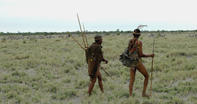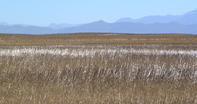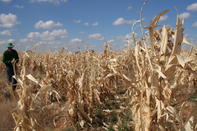Cities and Food Production
Just 10 000 years ago, the global population was 4 million. People fed themselves by gathering their own food from the wild and hunting the occasional animal. But it was about then that we began switching to a more sedentary life of the farmer – taming certain plants, domesticating the odd herbivore, encouraging food plants that suited our palates and our changing lifestyles.

We found ways to store food for longer periods, making it worthwhile to produce extra food. It was this very surplus food that freed some people up from the toil of farming, allowing them to pursue other kinds of work, rather than growing food. Without the ability to produce a surplus of food, store it for periods of time and transport it great distances, cities would never have been able to gather into the vast metropolises that they are today.
Now, 57 per cent of South Africans live in cities. That means they’re most likely not directly involved in producing any food. Many rural people don’t produce enough food to keep them self-sufficient all year round, either. Which means South Africa’s satisfied belly is dependent entirely on the health of its commercial farmer ventures – healthy businesses and healthy farms alike.
How a commercial farmer runs his business – and whether he keeps it afloat – is critical to southern Africa’s ability to keep its belly full and its bodies healthy.
We Are All Rain Dependant

Over in the Western Cape, where the finger of climate change is already pressing down on the pulse of agriculture, farmers know that their land cannot support another 2°C increase in temperature, further rainfall loss or shift of seasons.
Stellenbosch University horticulturist Dr Stephanie Midgley, who works closely with the farmers in this province, says that many farms are close to losing the microclimates upon which their farms depend. For most farmers who grow maize in an area that is the pulse of South African maize production, it all comes down to rain. How much rain falls, and when it falls. There isn’t enough groundwater for these farmers to extract for irritation, and that situation isn’t going to get better as climate change sets in.
In fact, this is one of the reasons why much of southern Africa is so vulnerable. Most of its farmers, commercial and subsistence alike, are dependent on rain to feed their crops. Across the continent, the footprint of rainfed cereal crops will shrink within the next century.
The latest modelling to emerge from the Intergovernmental Panel on Climate Change in 2007, the Intergovernmental Panel on Climate Change’s, (IPCC) Fourth Assessment Report, anticipates that the footprint of arid or semi-arid land will encroach by another 5 to 8 per cent, amounting to as much as 60 to 90 million hectares by the 2080s. By this time, “wheat production is likely to disappear from Africa”. The same study predicts a marked decrease in the amount of maize under production across the continent.
Harvest Yields May Drop

The local perspective looks similar. Bearing in mind that South Africa’s maize grows in two distinctive belts – the marginal western belt and the high-yield eastern “core” – two possible climate change-related forces are expected to exert themselves on the local maize harvest.
But they are pulling in opposite directions. On the one hand, warming and increased drought stress will probably shrink the national harvest. On the other hand, with more CO2 in the air, this could stimulate maize growth. This CO2 fertilisation effect generally makes crops like this more water efficient and produce a higher yield, which would benefit the total maize harvest.
But, argue our scientists, the benefits of this fertilisation effect are not expected to be enough to overcome the greater stresses of climbing temperatures, shifting rainfall patterns, and increased drought stress. Overall, the harvest will probably drop by as much as 10 to 20 per cent.
By Leonie Joubert